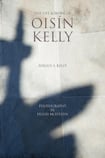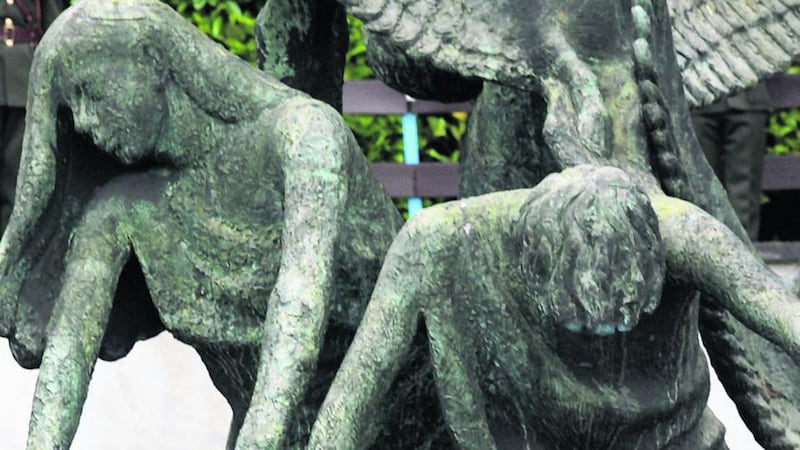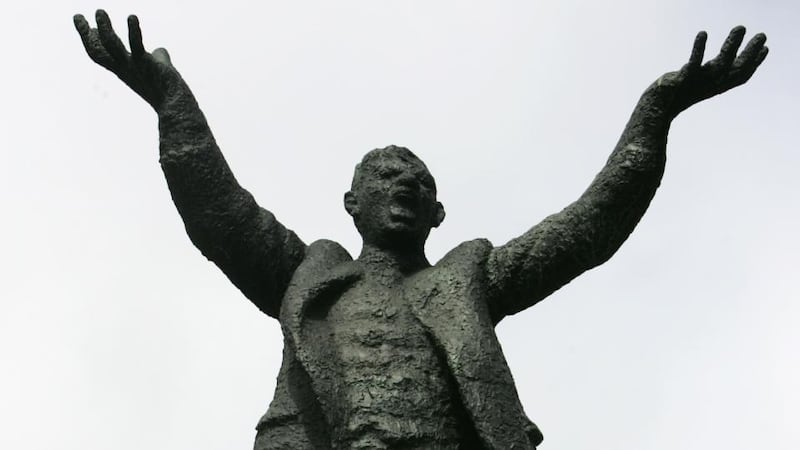
One wonders what Queen Elizabeth thought of Oisín Kelly's The Children of Lir when she bowed her head to it in the Garden of Remembrance in 2011. Even though she has probably seen more monuments to the dead than any living person, it is unlikely that her majesty had ever confronted such a peculiarly unfathomable expression of a national myth. But her opinion, though fascinating, wouldn't be half as interesting as ours. If, that is, we had one.
That we have yet to formulate a common idea of the meanings of these falling children – as we have, by contrast, long formed notions about Oliver Sheppard’s statue of Cuchulain in the GPO – stands to the credit of the work. Perhaps because it is hidden in plain sight, it is still becoming itself.
Thanks to this slim but intellectually weighty volume we now know what Kelly himself intended. In a memo to the Office of Public Works dated 1959 – the statue was installed in 1971 – he declares that “history is incapable of representational treatment” and describes speculation “in the Lytton Strachey fashion” about the physical appearance of Tone, Parnell or Casement as “trivial and impertinent”. In his monument, he says, the “only human quality I would like to suggest is that of effort suffering”.


The observations of the OPW’s civil servants on putting down Strachey and putting up a statue to a compound noun unknown to the dictionary would be worth reading. But it stands to the Commissioners’ credit, too, that they didn’t run away from it.
The sculptor’s name may have helped his bronze offspring to be adopted. Surely, Oisín Kelly had to be a Catholic and a nationalist. The latter is debatable; the former is not. A member of the Church of Ireland, Kelly was christened, and was always known to his family, as Austin, in memory of an uncle killed at Gallipoli. William Trevor, the novelist, a former pupil of Kelly’s at St Columba’s College, Rathfarnham, described him as riding around “on a fat old farmhorse”. But Kelly was no Horse Protestant: he was brought up in James’s Street, one of Dublin’s poorest areas, where his father was principal of the national school.
Delightfully odd
The Kellys were odd in a way we no longer have much room for, but that helped then to make Ireland delightful. His grandfather, for example, was an RIC constable who devoted his spare time, like a version of Flann O’Brien’s Third Policeman, to carving cigar-boxes with a pen-knife. (It is a pity that some of the elaborate picture frames that, we are told, still survive were not photographed for this book.) Then there was Oisín’s chronically anxious Scottish Methodist mother: she was such a back-seat driver that her husband fitted an extra horn to their car so that she could sound a blast on it at perilous moments.
Of Oisín’s own personal life all that can be said here is that he married the daughter of the Provost of Trinity College. Though Edward Gwynn was the grandson of William Smith O’Brien, the Young Irelander, he was as conservative as only a provost could be. Living with the Gwynns in Tallaght, which Kelly was obliged to do for many years, involved, in his son’s words, “a significant loss of independence”.
Like almost every other artist at the time, Kelly could not make a living from art. In 1964, however, he was appointed artist in residence at the newly-founded Kilkenny Design Workshops. It was part-time work, two days a week, and the £800 a year salary represented, I think, a considerable cut in his income. But it allowed him to do his bit for the country. He was in that sense, if not a nationalist, a patriot.
This is expressed with humorous but fierce clarity in a letter he wrote in 1961 to one of his pupils in St Columba’s who intended to emigrate. It depressed him, he said, to have failed to prevent what he regarded as “a monstrous and evil thing”.
Emigration was evil because “the loss of sentiment for a locality puts too great a strain on personal relationships”. Emigrating, or staying, just to become wealthy was wrong too, because “the poor are more virtuous than the rich” and possess “in greater degree the princely qualities of gaiety, courage and generosity”. For Kelly “the promotion in the Protestant Ascendancy of a sense of responsibility to this country was one of the objects of the foundation of this College”, and the diminishing of their privileges did not absolve Protestants from that responsibility. Otherwise “the Marxists are right and honour, duty, loyalty, patriotism are superficial psychic phenomena whose reality is entirely derived from economic facts”.
Artist’s role
Plain living and high thinking at this level of naivety are rare in the real world. The combination can, though, be found in fiction: Kelly could be Don Quixote, except for the seriousness, which was not futile. He didn’t tilt at windmills, he built them. Not literally, of course, but, if asked, he would have made a good fist of it. “An artist’s job,” he believed, most unromantically, “is not to decide what role he is going to play but to accept the role that society asks him to play.”
At the beginning of his working life Kelly taught carpentry, and all through his artistic life he was a handyman. Hands, as facts and ideas, were important to him: who could look at the statue of James Larkin in O'Connell Street and not be struck by the disconnect between the energy of the body and the panicked slackness of the barely supported hands? And is it not a deliberate irony that the horses of The Chariot of Life in front of the Irish Life building in Abbey Street are driven by a man whose outstretched hands hold no reins?
Though he condemned “the invasion of the arts by intellectuals, full of arrogance, prurience and misery”, Kelly was undoubtedly an intellectual. He disguised the profundity of his thinking with a man-in-the- street attitude: asked why he had chosen to sculpt the face of Christ in a particular way, he said, “I didn’t choose. I divided the area I had allotted to the head into three parts: forehead, nose, and chin; and then I bashed ahead.”
The least successful objects in Kelly’s output were mass-produced for Kilkenny Design, but even they are often charming – his linen tea-cloths, for example, bear being framed. Anything he made himself, including the furniture he built out of the oak staves of Guinness barrels, is touched with beauty. And when his painstaking devotion to carving resistant materials met his love for people, but particularly defenceless children, as evidenced in his limestone sculpture of his newborn daughter, Piccola, the touch is uniquely tender.
A non-drinker but a workaholic and an inveterate smoker, Kelly died in 1981, aged 66. He was also – a signal mark of difference in a tea-drinking country – a coffee addict. To this, as to everything he did, he devoted time, care and attention: he made an intricate little box (another reminder of his Third Policeman origins in comedy) to contain his brewing implements, including a miniature copper saucepan. That this totally Protestant artist and thoroughly attractive individual created such a body of work is fortunate for the lower-case catholic country he served and loved.
Brian Lynch is a member of Aosdána. His website is brianlynch.org










